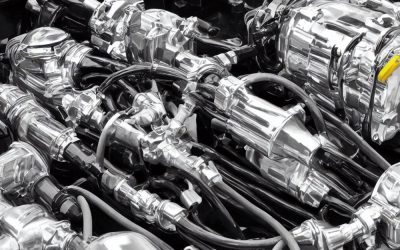Automotive Fuel Injection Systems: A Comprehensive Guide
Automotive fuel injection systems are an essential component of modern vehicles. They are responsible for delivering the correct fuel to the engine at the right time, ensuring optimal performance and fuel efficiency. Fuel injection systems have come a long way since their inception, with the latest electronic fuel injection (EFI) systems offering even greater precision and control over fuel delivery.
Fuel injection systems can be broadly categorized into direct Injection and indirect Injection. In natural injection systems, fuel is injected directly into the combustion chamber, while in indirect injection systems, fuel is injected into the intake manifold. Direct injection systems are known for their efficiency and power, while indirect injection systems are more straightforward and cost-effective. Direct injection systems have become increasingly popular in recent years due to their superior performance and fuel efficiency.
History of Fuel Injection Systems
Fuel injection systems have come a long way since their inception. Here is a brief history of the evolution of fuel injection systems.
Early Fuel Injection Systems
The first fuel injection systems were developed in the early 1900s and were primarily used in aviation engines. These systems were mechanically operated and used a carburetor-like device to inject fuel into the engine. However, these early systems were complicated and expensive, making them impractical for automobile use.
Single-Point Injection
In the late 1950s, single-point injection systems were developed. These systems used a single injector in the throttle body to deliver fuel to the engine. While these systems improved carburetors, they still needed to improve their ability to provide precise amounts of fuel to the engine.
Multi-Point Fuel Injection
Multi-point fuel injection systems were introduced in the 1980s and quickly became the automobile fuel injection standard. These systems use multiple injectors in each cylinder to deliver precise amounts of fuel to the engine. Multi-Point allows for better fuel efficiency and improved performance.
Continuous Injection
Continuous injection systems, also known as direct Injection, were introduced in the 1990s. These systems inject fuel directly into the combustion chamber, bypassing the intake manifold. Continuous Injection allows for even greater fuel efficiency and improved performance.
Modern Fuel Injection Systems
Today’s fuel injection systems are highly advanced and use sophisticated sensors and computer-controlled injectors to deliver precise amounts of fuel to the engine. Some modern designs use multiple injectors per cylinder to improve performance and fuel efficiency.
Fuel injection systems have come a long way since their early days. Today’s highly efficient and reliable systems offer improved performance over carburetors.
Types of Fuel Injection Systems
Fuel injection systems have evolved over the years, and today, several types of fuel injection systems are available in the market. These systems differ in design, functionality, and how they deliver fuel to the engine. In this section, we will discuss the four main types of fuel injection systems.
Port Injection
Port injection, or multi-point Injection, is one of the most common fuel injection systems used in modern vehicles. In this system, fuel is injected into the intake port of each cylinder through a separate injector. The fuel is mixed with air before entering the combustion chamber, resulting in a more efficient and cleaner burn.
Throttle Body Injection
Throttle body injection (TBI) is a fuel injection system prevalent in the 1980s and 1990s. In this system, a single injector is located in the throttle body, responsible for delivering fuel to all the cylinders. TBI systems are less efficient than port injection systems but are more straightforward and less expensive.
Direct Injection
Direct Injection (DI) is a newer type of fuel injection system that has gained popularity in recent years. This system injects fuel directly into the combustion chamber rather than the intake port. DI systems are more efficient than port injection systems, allowing more precise control over fuel delivery. They also result in a more complete burn, which reduces emissions and improves fuel economy.
Indirect Injection
Indirect Injection, also known as pre-chamber Injection, is an older fuel injection system still used in some diesel engines. This system injects fuel into a small pre-chamber, mixing it with air before entering the combustion chamber. Indirect injection systems are less efficient than direct injection systems but are more reliable and durable.
In conclusion, the type of fuel injection system used in a vehicle depends on various factors, including the engine design, fuel efficiency, and emissions requirements. The four main types of fuel injection systems are port injection, throttle body injection, Direct Injection, and indirect Injection. Each method has its advantages and disadvantages, and the choice of technique depends on the vehicle’s specific needs.
Components of Fuel Injection Systems
Fuel injection systems are a vital component of modern automobiles. They provide a more efficient and reliable way of delivering fuel to the engine than traditional carburetors. The following features make up a typical fuel injection system:
Fuel Pump
The fuel pump delivers fuel from the fuel tank to the fuel injectors. It is typically located inside the fuel tank and is powered by electricity. The fuel pump creates pressure in the fuel lines, which forces fuel into the fuel injectors.
Fuel Injectors
Fuel injectors are responsible for delivering fuel to the engine in precise amounts. They are typically located in the intake manifold and are controlled by the engine’s electronic control unit (ECU). The ECU determines the fuel needed based on various factors such as engine speed, load, and temperature.
Intake Manifolds
The intake manifold distributes air and fuel to the engine’s cylinders. It is typically made of aluminum or plastic and is designed to optimize the flow of air and fuel. Some popular intake manifolds include the Holley and TBI (throttle body injection) designs.
Fuel Tanks
Fuel tanks store the fuel that is used by the fuel injection system. They are typically made of steel or plastic and are located underneath or at the vehicle’s rear. Fuel tanks are designed to prevent fuel from spilling out during normal driving conditions and in the event of an accident.
In conclusion, the fuel injection system is a complex and critical component of modern automobiles. Its various parts work together to deliver fuel to the engine precisely and efficiently. Proper maintenance and care of these components can ensure the longevity and performance of the fuel injection system.
How Fuel Injection Systems Work
Fuel injection systems are an essential component of modern automotive engines. Instead of using carburetors, which mix fuel and air in a single chamber, fuel injection systems provide fuel to the engine in a more controlled and efficient manner.
Fuel injection systems use a fuel pump to deliver gasoline from the fuel tank to the engine. The fuel is then injected into the engine’s cylinders through injectors. Electronic fuel injection (EFI) systems, such as Sniper EFI, use electronic sensors to monitor the engine’s performance and adjust the fuel delivery accordingly.
In a typical fuel injection system, the fuel pump delivers gasoline to a fuel rail, distributing the fuel to each engine’s cylinders. The injectors, controlled by the engine’s computer, then spray a fine mist of gasoline into the combustion chamber, where the spark plug mixes with air and ignites it.
Throttle body injection (TBI) is a fuel injection system that uses a single injector to deliver fuel to the engine’s intake manifold. This system is less efficient than multi-port fuel injection, which uses multiple injectors to deliver fuel directly to each cylinder.
Fuel injection systems provide several advantages over carburetors, including improved fuel efficiency, increased power, and better air/fuel mixture control. By delivering fuel directly to each cylinder, fuel injection systems can optimize combustion, resulting in increased horsepower and better ignition timing.
In conclusion, fuel injection systems are essential to modern automotive engines. They provide a more efficient and controlled method of delivering fuel to the engine, resulting in improved performance and fuel efficiency.
Benefits of Fuel Injection Systems
Fuel injection systems have several benefits over carbureted engines. This section will discuss some of the advantages of fuel injection systems.
More Powerful Engines
Fuel injection systems provide more precise control over the amount of fuel injected into the engine. Fuel injection results in a more efficient combustion process, leading to more power output from the engine. Fuel injection systems can also adjust the fuel-to-air ratio in real time, which helps to optimize the engine’s performance.
Economical
Fuel injection systems are more economical than carbureted engines because they use less fuel. The engine burns fuel more efficiently since fuel injection systems provide more precise control over the fuel-to-air ratio. This results in better fuel economy and lower emissions.
Better Fuel Economy
Fuel injection systems can help improve fuel economy by up to 20% compared to carbureted engines. Fuel injection systems provide more precise control over the fuel-to-air ratio, which helps to optimize the engine’s performance.
Improved Cold Starting
Fuel injection systems are designed to provide better cold-starting performance. Fuel injection systems can adjust the fuel-to-air ratio in real time, which helps to optimize the engine’s performance in cold weather conditions.
Reduced Emissions
Fuel injection systems produce fewer emissions compared to carbureted engines. Fuel injection systems provide more precise control over the fuel-to-air ratio, which helps to optimize the engine’s performance and reduce emissions.
In conclusion, fuel injection systems provide several benefits over carbureted engines. They are more powerful, economical, and produce fewer emissions. They also offer better cold-starting performance and improved fuel economy.
Aftermarket Fuel Injection Systems
Aftermarket fuel injection systems are a popular choice among car enthusiasts who want to improve the performance of their vehicles. Unlike factory-installed fuel injection systems, aftermarket systems offer more customization options and can provide better fuel efficiency and power.
Professional Installation
Installing an aftermarket fuel injection system is complex and requires professional knowledge and experience. Therefore, it is recommended to have a professional mechanic install the system.
A professional installation ensures the system is installed correctly and all the components work perfectly. It also helps avoid potential issues arising from an incorrect installation, such as poor fuel economy, engine misfires, and other problems.
Tools Required
Installing an aftermarket fuel injection system requires a specific set of tools. The following tools are needed to install an aftermarket fuel injection system:
- Fuel pressure gauge
- Fuel pressure regulator
- Fuel injector puller
- Fuel injector cleaning kit
- Fuel line disconnect tool
- Multimeter
- Vacuum gauge
- Wire cutters and strippers
- Screwdrivers and wrenches
Having all the necessary tools is essential before starting the installation process. Easily accessible tools ensure the installation process is smooth and without issues.
When choosing an aftermarket fuel injection system, it is essential to consider the quality of the system, the fuel injectors, and the tools required for installation. A high-quality system will provide better performance, fuel efficiency, and reliability.
In conclusion, installing an aftermarket fuel injection system is a great way to improve a vehicle’s performance. However, it is essential to have a professional install the system and have all the necessary tools to ensure a successful installation.
Fuel Injection Systems for Performance
Fuel injection systems are an essential component of high-performance engines. They provide the fuel and air mixture required to generate the power for racing and other high-performance applications. This section will discuss some of the most popular fuel injection systems used for performance applications.
Fast
Fast is a famous fuel injection system brand known for its reliability and performance. These systems are designed to deliver precise fuel, which is essential for high-performance engines. Fast systems are available in various configurations to suit applications, including street and racing engines.
Edelbrock
Edelbrock is another famous fuel injection system brand widely used in performance applications. These systems are designed to provide optimal fuel delivery and airflow, essential for generating high horsepower and torque. Edelbrock systems are available in various configurations to suit applications, including street and racing engines.
Holley Sniper EFI
Holley Sniper EFI is a revolutionary fuel injection system with maximum performance and reliability. This system is designed to be easy to install and use, making it a popular choice for professional and amateur racers. Holley Sniper EFI systems are available in various configurations to suit applications, including street and racing engines.
In conclusion, fuel injection systems are an essential component of high-performance engines. They provide the fuel and air mixture required to generate the power for racing and other high-performance applications. Fast, Edelbrock, and Holley Sniper EFI are some of the most popular fuel injection systems for performance applications. These systems are designed to provide reliable and precise fuel delivery, essential for generating high horsepower and torque.
Fuel Injection Systems for Diesel Engines
Fuel injection systems for diesel engines differ from those used in gasoline engines. Diesel engines require a different fuel injection system to ensure proper combustion. The fuel injection system in diesel engines delivers fuel to the combustion chamber at the right time and quantity.
Diesel engines have a higher compression ratio than gasoline engines, which means the fuel is compressed more before ignition. This higher compression ratio requires a different type of fuel injection system. In diesel engines, the fuel is injected directly into the combustion chamber, whereas in gasoline engines, the fuel is injected into the inlet manifold.
There are two fuel injection systems for diesel engines: indirect Injection and Direct Injection. Indirect injection systems use a pre-combustion chamber to mix the fuel and air before it enters the combustion chamber. Direct injection systems inject the fuel directly into the combustion chamber.
Direct injection systems are more efficient than indirect injection systems because they allow more precise control over fuel delivery. Natural injection systems also allow for more efficient combustion, resulting in better fuel economy and lower emissions.
The fuel injection system in diesel engines also plays a critical role in ignition timing. Ignition timing refers to the timing of the spark plug firing in gasoline engines and the fuel injection in diesel engines. The fuel injection system must deliver the fuel at the right time to ensure proper combustion.
In summary, the fuel injection system in diesel engines is responsible for delivering fuel to the combustion chamber at the right time and in the correct quantity. There are two fuel injection systems for diesel engines: indirect Injection and Direct Injection. Direct injection systems are more efficient than indirect injection systems, allowing more precise control over fuel delivery. The fuel injection system also plays a critical role in ignition timing, ensuring proper combustion.



